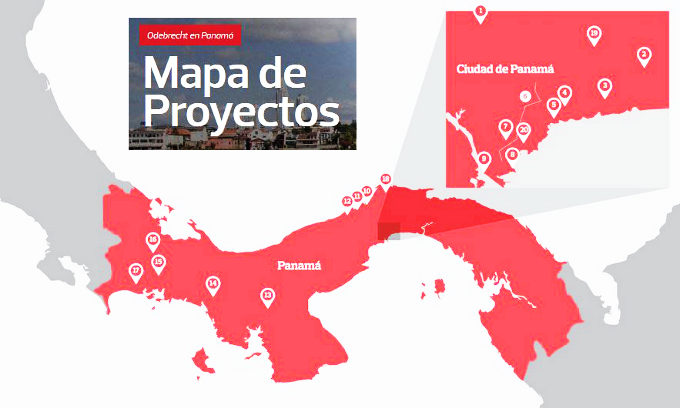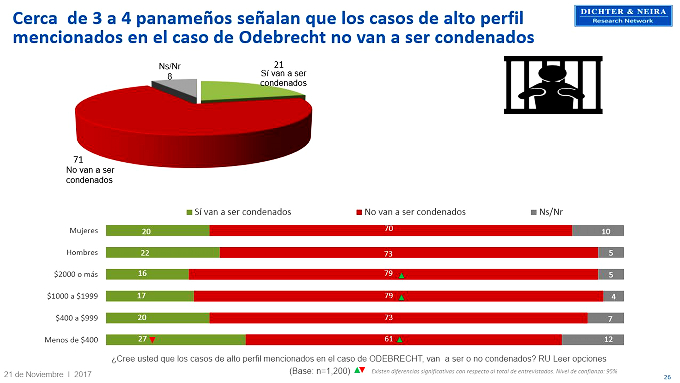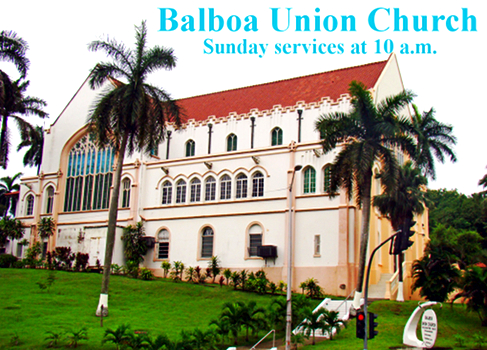
Jorge Espino pleaded guilty, even if defense counsel, the judge and the prosecutors didn’t want you to know that
by Eric Jackson
Once upon a time, in one of those “copy the gringo technology” crazes that occasionally afflict Panamanians, asbestos insulation was incorporated into a lot of Panama’s public buildings, as it was in a certain period of the old Canal Zone building practices. This reporter spent part of his childhood growing up in what had been a World War II era Navy officers’ quarters, a building whose pipes and roof had been insulated with asbestos, a naturally occurring fibrous rock.
By the time that the building — a magnificent three-story structure, with walls like those of a bomb shelter — was reverted to Panama pursuant to the Torrijos-Carter Treaties, the world had learned something about asbestos. It was a hard lesson largely at the expense of builders in the US Navy yards, which had installed a lot of asbestos to retard the spread of fires on warships, from compartment to compartment or through their electrical systems. Years later these workers began to die in great numbers from a special sort of cancer, mesothelioma, which it was determined is a common result of human exposure to asbestos fibers. Panama tore the house down rather than rid it of the asbestos.
It also turned out that a few of Panama’s older public schools had asbestos insulation built into them, that when the problem became known that these tended to have the carcinogenic fibers encapsulated with various paints or sprays, and that later when governments and their pet contractors changed there were some instances of the encapsulating material being ignorantly cut away in the course of maintenance or renovation work. To anyone who got mesothelioma it would be a huge problem, but in terms of the numbers of school buildings and people affected, it was a relatively small matter.
In the meantime, Panamanian school construction standards changed. To protect from tropical sun’s rays, a lot of public schools had fiberglass insulation installed in their roofs or ceilings. Done right, it’s all quite manageable. Hire somebody’s cousin who knows not to do installation or maintenance and the glass fibers can get into the classroom environment and they can be quite the irritant, especially to the eyes. Still, nothing to compare to the health risk posed by asbestos.
In 2004 the PRD administration of Martín Torrijos came to power and the Ministry of Education was doled out to cliques who more or less considered their appointments a license to steal. Two education ministers, Belgis Castro and Salvador Rodríguez, eventually beat their raps but each went to jail for a time. Part of Balbina Herrera’s San Miguelito entourage went to jail over separate pillages of the public schools.
One really big scheme depended on Panama’s truly awful educational level, which has become worse since then. In the public mind fiberglass and asbestos insulation were conflated. Might it be a matter of some urgency to remove asbestos from school buildings? Surely that, or at least making sure that it was well encapsulated. Protecting students and teachers from fiberglass exposure was also important, but far less urgent. However, a great hue and cry issued from the Torrijos administration about the threat of fiberglass. The schools let out many millions of dollars worth of contracts to favored businesses to remove fiberglass from the schools. Including from schools that never had any fiberglass, nor any asbestos either. Large sums were paid for work that was never done, in some cases was never there to be done.
One of the companies favored by the administration of Martín Torrijos Espino was Constructora Total SA. The company and its owner, Jorge Enrique Espino Méndez, got a $200,000 contract for fiberglass removal from schools. Mr. Espino was called on the carpet in the investigation. He said that while his company got the contract, it never went into effect and no payment was made, as by the time that it would have Belgis Castro was in deep trouble over the program and its abuses. In any case, Espino was never formally charged with anything, much less convicted. He also denied any familial relationship with the president at that time, despite the latter’s similar maternal surname.
Family ties have, however, been important for Jorge Espino. His father, Nelson Espino, was one of the professional / civil servant apparatchiki who formed the civilian infrastructure of the military dictatorship. In Noriega times he was the mayor of Panama City. A civil engineer and surveyor by trade, he served various PRD governments as minister of agriculture, director of Catastro and of the Agrarian Reform office, head of the IDAAN water and sewer utility, man in charge of the metro area’s solid waste management and the top regulator of privatized public utilities. But in the reported scheme of things, Jorge Espino’s important tie was not with President Martín Torrijos but a friendship with Minister of Education Belgis Castro.
Nilson Espino was one of the Norieguistas who avoided great disgrace when the dictatorship fell in the 1989 US invasion. Any government archives that might have suggested that this treatment was too nice have been carted away by the US Army and held under lock and key ever since. And after the crushing defeat of Balbina Herrera and the PRD in the 2009 elections, Jorge Espino, like all the ex-PRD transfuga legislators, was one of those survivors who forged a profitable relationship with the new regime.
Did Noriega’s former prosecutor in charge of shutting down the opposition press, Alejandro Moncada Luna, move right into the Martinelli ranks, rise to the presidency of the Supreme Court, and use that position for overpriced no-bid or rigged-bid courthouse construction or renovation contracts, taking kickbacks and then laundering the assets before putting them into luxury real estate and so on? Indeed he did. Surely he took more than most of the legislators and others who jumped from the PRD to the Martinelli camp.
(Will Mr. Moncada Luna, now a resident of the El Renacer Penitentiary in Gamboa, accuse this reporter of a crime for saying that he did that? It would not be the first time that Moncada Luna prosecuted yours truly for criminal defamation. Moncada Luna lost that 2006-2008 case. But of course, in the often fictional land of the Panamanian legal system, the gist of criminal defamation is to accuse someone of a crime that it can’t be shown that she or he committed. Mocada Luna copped a plea in his trial before the National Assembly, part of the deal being that in exchange for accepting guilt for, while holding public office, amassing millions of dollars worth of assets whose legitimate provenance he could not show in exchange for all other criminal charges against him being barred. So will we now hear that since charges can’t be brought, those crimes never happened? We should expect to hear such future arguments from at least some of Martinelli’s thugs.)
Moncada Luna did not work alone. Allegedly, his bogus contracting and money laundering gang had more than a dozen members, including some high profile ones like the former vice president of Panama during the PRD administration of Ernesto Pérez Balladares, banker and businessman Felipe “Pipo” Virzi and a member of the Panama Canal Authority board of directors, Nicolás Corcione Pérez Balladares. Charges were brought against 14 people, including Jorge Espino.
Espino moved to protect his interests. He sang his song about Moncada Luna and Corcione to prosecutors, giving evidence that would likely be damning to the ACP director and lighten his sentence. It was all conditional, of course.
In September of 2016 a three-judge appeals court panel ruled that because Moncada Luna copped a plea that barred his prosecution for anything else, that plea bargain protected all of the hoodlum ex-magistrate’s accomplices for all of the crimes they committed together. Proving that this was a purchased judgment will probably be forever impossible, but it’s hard to see much chance of it being anything else. There was no foundation in the law for this decision. But it did get some of Panama’s richest people and some prominent members of this country’s political caste off of the hook. Jorge Espino walked along with his co-defendants, including the ones whom he had betrayed.
Fast forward a little more than a year. Witnesses from the Brazilian-based international hoodlum corporation Odebrecht, plus a paper trail, say that Jorge Espino was the well paid conduit for bribes paid to one of Ricardo Martinelli’s public works ministers, Jaime Ford. The allegation is at least $1.8 million in Odebrecht money routed through a shell company’s bank account in Andorra, the beneficial owner of said company and account supposedly Jaime Ford. Espino was charged, briefly jailed, then let out on bail. Prosecutors flipped him to become state’s evidence.
But would Attorney General Kenia Porcell forthrightly say such a thing? Why would she want to ruin the business career and reputation of such a fine upstanding citizen as Jorge Espino Méndez? Notwithstanding her promises to reveal the names of those who took bribes from Odebrecht, prosecutors did not contest a defense motion before Judge Óscar Carrasquilla to close the plea bargain hearing and conceal the identity of one of at least 43 people identified as participating in Odebrecht crimes in Panama.
The November 20 hearing was for Jorge Espino. He agreed to pay back, in installments, $1 million for the bribe that he took. He has given or will give testimony that likely will implicate others. The deal gives him a 42-month prison sentence, which might sound severe enough except that such a prison sentence, being for less than four years, may be avoided by paying a $1 per day fine. That is, $1,275 instead of jail time.
So what kept Espino from going on to his next business venture without anyone being any wiser? More than anything, leaked pleadings on Ford’s behalf attacking Espino as a convicted criminal whose testimony is not to be trusted. Anonymous sources at the courthouse also told La Prensa. So much for “witness protection.”
As one might imagine, Panama’s anti-corruption activists are fairly livid about the whole procedure and the light sentence. The $1 million payback suggests that there was more money and were more transactions than are featured in the allegations that are now in public circulation. But then, part of impunity is the ability of criminals in high places to play information control games that allow them to dismiss both the known and the apparent as mere speculation.

~ ~ ~
These announcements are interactive. Click on them for more information.











